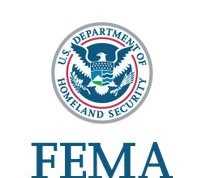Commercial Property Transaction Volume Expected to Decline Over Next Three Years, According to a New ULI Semi-Annual Real Estate Market Forecast
WASHINGTON – April 7, 2016 – (RealEstateRama) — Commercial property transaction volume is expected to decline over the next three years to $475 billion in 2018, according to a new three-year economic forecast from the Urban Land Institute (ULI) Center for Capital Markets and Real Estate. However, this volume forecast over the next three years is surpassed only by volumes in 2007 and 2015; and follows six years of commercial property volume growth.
The latest ULI Real Estate Consensus Forecast, a semi-annual outlook, is based on a survey of 48 of the industry’s top economists and analysts representing 36 of the country’s leading real estate investment, advisory, and research firms and organizations. The survey, conducted in March, provides forecasts on broad economic indicators; real estate capital markets; property investment returns for four property types; vacancy and rental rates for five property types; and housing starts and prices.
Overall, the recent Consensus Forecast for April 2016 projects continued economic expansion over the next three years but at a somewhat slower pace than the prior two years. It also anticipates continued commercial price appreciation and positive returns, but at more subdued and decelerating rates; above-average but decelerating rent growth rates in all property sectors, and better than average vacancy/occupancy rates, except for retail. Single family housing starts are projected to continue increasing, but remain below the long-term average.
Other key findings of the Consensus Forecast include:
- Issuance of commercial mortgage-backed securities (CMBS) is expected to decline in 2016 to $85 billion and then return to $100 billion in both 2017 and 2018.
- Commercial real estate prices are projected to grow but at subdued and slowing rates over the next 3 years, at 5.0 percent in 2016, 2.7 percent in 2017 and 3.0 percent in 2018, all below the long-term average growth rate of 5.8 percent.
- Institutional real estate assets are expected to provide total returns of 8.1 percent in 2016, moderating to 7.2 percent in 2017 and 7.1 percent in 2018. By property type, returns are expected to be stronger for industrial and office, followed by apartments and retail, in 2016. By 2018, there is little variation among property type.
- Vacancy rates are expected to continue to improve modestly for office and retail over all three forecast years. Industrial availability rates and hotel occupancy rate are forecasted to improve modestly in 2016 and then slightly reverse direction in 2017 and 2018. Apartment vacancy rates are also expected to rise over the next three years.
- Commercial property rents are expected to increase for the four major property types in 2016, ranging from 2.0 percent for retail up to 4.0 percent for office and 4.5 percent for industrial. Rent increases in 2018 in these four types will range from 1.7 percent for retail to 3.0 percent for office. Hotel RevPAR is expected to increase by 4.6 percent in 2016 and 3.0 percent in 2018.
- Single-family housing starts are projected to increase from 714,600 units in 2015 to 900,000 units in 2018, remaining below the 20-year annual average.
While survey respondents are registering more concern over the growth of the U.S. real estate market, economists are calling for a more preferable gradual slowdown, said ULI leader and survey participant William Maher, director of North American strategy for LaSalle Investment Management. “Compared to six months ago, real estate researchers are predicting slower economic growth, slipping real estate fundamentals and lower returns from both the public and private markets. As was the case six months ago, there is no imminent downturn on the horizon, although global economies and markets remain fragile and volatile,” he added.
Consensus Forecast survey predictions by commercial property type include:
- Office –The office vacancy rate forecast for 2016 and 2017 is for continued declines to 12.6 percent and 12.3 percent, respectively. Rates are expected to plateau in 2018 at 12.3 percent. Office rental rates increased 4.0 percent in 2015. Rental rate growth is expected to continue at 4.0 percent in 2016 and then moderate to 3.5 percent in 2017 and 3.0 percent in 2018. Still, the forecasts for all rates remain above the 20-year average. The forecasts for rental rate growth in 2016 remain the same, while the forecast for 2017 is less optimistic than it was six months ago.
- Apartments –Vacancy rates are expected to increase slightly over the next three years, to 4.9 percent, 5.2 percent and 5.4 percent in 2016, 2017 and 2018, respectively. Apartment rental rate growth is expected to moderate in 2016 and 2017 to 3.6 percent and 3.0 percent, respectively, but remain above the 20-year average growth rate of 2.8 percent. Rent growth is expected to dip below the long-term average in 2018, to 2.4 percent. Compared to 6 months ago, the forecasted vacancy rates for 2016 and 2017 are slightly higher, and the forecasted rental rate changes are about the same.
- Retail – The recent Real Estate Consensus Forecast anticipates continued improvements in retail availability rates over the next two years, with year-end availability rates expected to decline to 10.9 percent by 2016 and 10.7 percent by 2017. Availability rates are expected to plateau at 10.7 percent in 2018. All these rates remain above the 20-year average. Regarding retail rental rates, the forecast expects further growth at a rate that exceeds the 20-year average for the first time in eight years—at 2.0 percent in both 2016 and 2017 and 1.7 percent in 2018. Compared to six months ago, the forecasts of availability rates and rental rate growth for 2016 and 2017 are less optimistic.
- Industrial/warehouse – Industrial/warehouse availability rates are expected to continue to decline in 2016, with year-end vacancy rates at 9.2 percent. Rates are forecast to inch up in 2017 and 2018, but remain below the long-term average. Survey respondents predict healthy but moderating rental rate growth with increases of 4.5 percent in 2016, 3.0 percent in 2017, and 2.7 percent in 2018. These forecasts are all above the 20-year average growth rate. The forecasts for industrial/warehouse availability rates and rental growth rates in 2016 and 2017 are all more optimistic than the Consensus Forecast of six months ago.
- Hotel – Respondents to the recent Real Estate Consensus Forecast predict occupancy rates to remain strong over the next three years, with some minor fluctuations, at 65.8 percent in 2016, 65.5 percent in 2017 and 65.2 percent in 2018. Following six years of above-average hotel revenue per available room (RevPAR), RevPAR growth is expected to begin moderating over the next three years, staying above the long-term average in 2016, at 4.6 percent, but falling below the long-term average to 3.0 percent by 2018. Compared to the forecast of 6 months ago, the current 2016 and 2017 forecasts for occupancy rates are slightly more optimistic, while RevPAR forecasts are more pessimistic.
The market survey is the ninth in a series of polls conducted by ULI to gauge sentiment among economists and analysts about the direction of the real estate industry. The next forecast is scheduled for release in October 2016.
NOTE TO REPORTERS AND EDITORS: The Real Estate Consensus Forecast survey results were released today during a ULI webinar open to ULI members and the media. Webinar participants were Anita Kramer, senior vice president, ULI Center for Capital Markets and Real Estate; Jeffrey Havsy, chief economist of the Americas, CBRE Econometric Advisors; Peter Linneman, principal, Linneman Associates; Mary Ludgin, managing director, Heitman; and Martha Peyton, managing director, TIAA-CREF. Interviews with the panelists and access to the archived webinar recording are available upon request to working members of the press.
About the Urban Land Institute
The Urban Land Institute (uli.org) is a nonprofit education and research institute supported by its members. Its mission is to provide leadership in the responsible use of land and in sustaining and creating thriving communities worldwide. Established in 1936, the Institute has more than 37,000 members representing all aspects of land use and development disciplines.
contact: Trisha Riggs at 202-624-7086;
by Trisha Riggs, ULI















